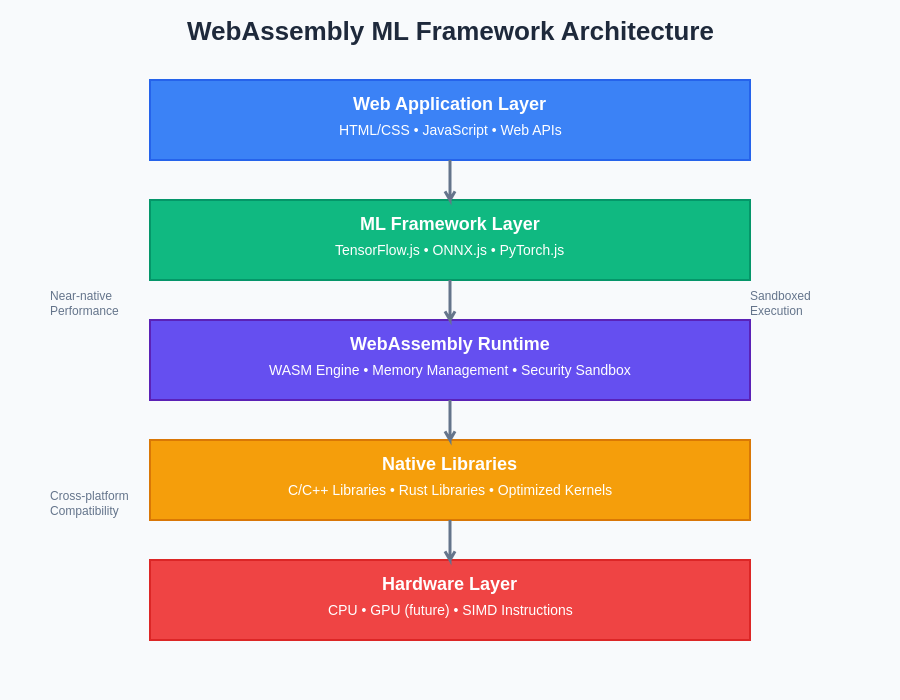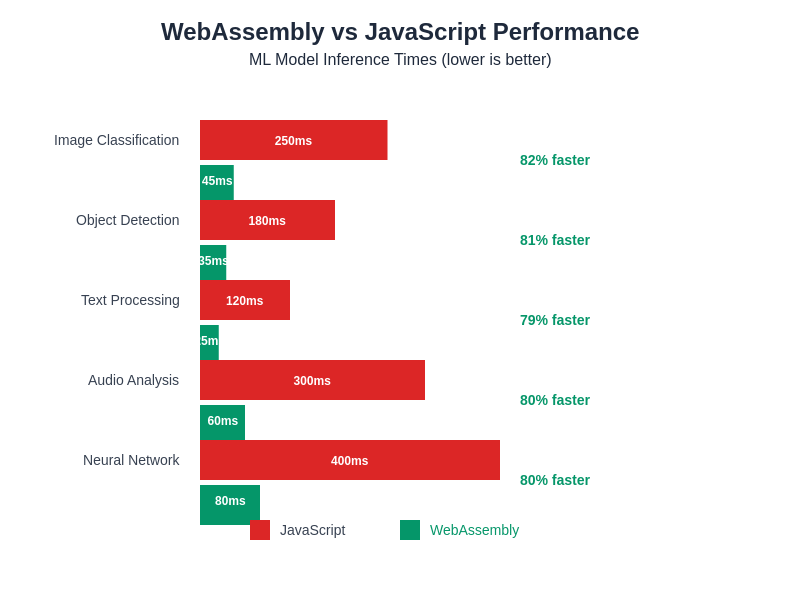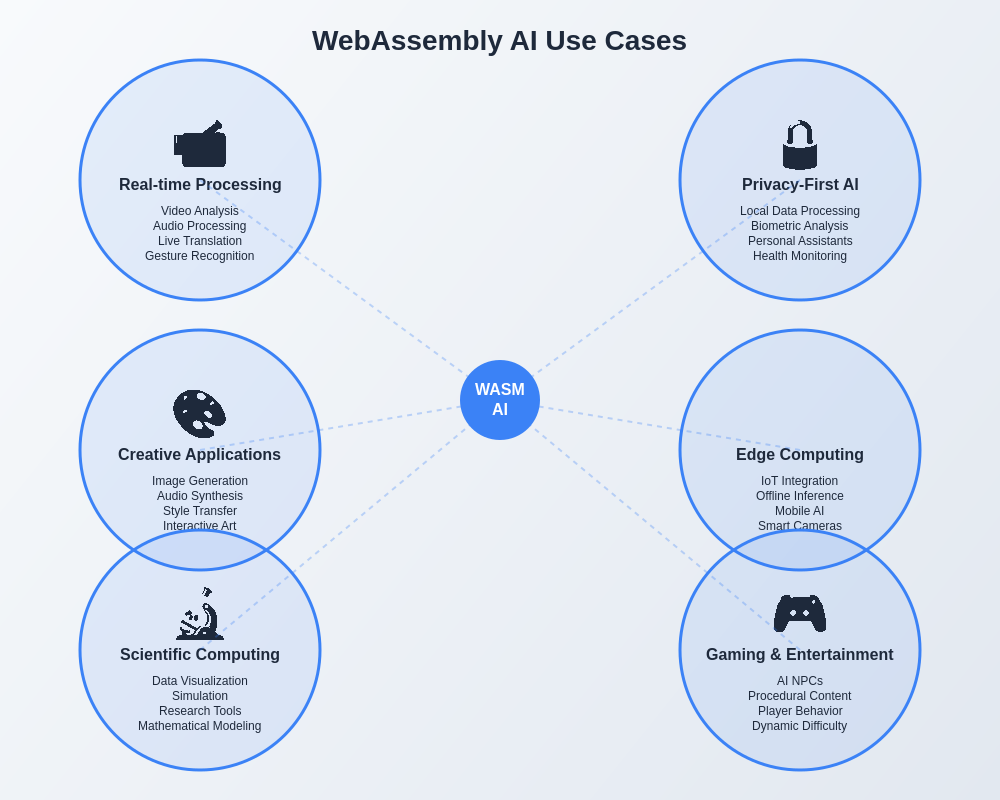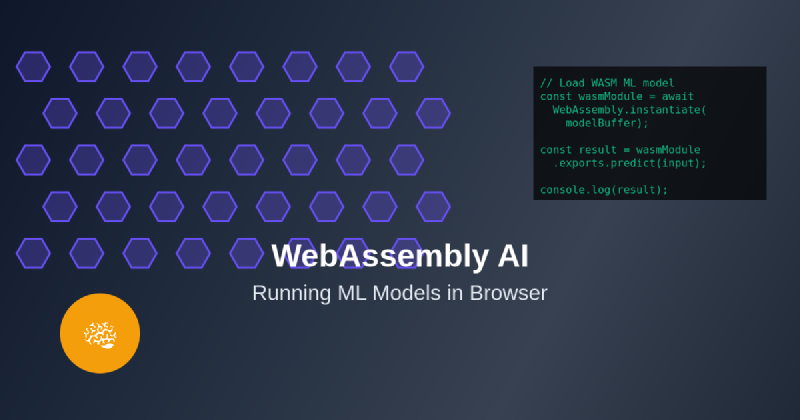The convergence of WebAssembly and artificial intelligence represents one of the most significant technological breakthroughs in modern web development, fundamentally transforming how machine learning models are deployed and executed within browser environments. This revolutionary combination has unlocked unprecedented possibilities for creating sophisticated, high-performance AI applications that run directly in web browsers without requiring server-side processing or specialized hardware configurations.
Explore the latest AI developments and trends to understand how WebAssembly is reshaping the landscape of browser-based machine learning applications. The integration of WebAssembly with AI technologies has created a paradigm shift that enables developers to deliver near-native performance for complex computational tasks while maintaining the accessibility and cross-platform compatibility that makes web applications so powerful.
The WebAssembly Revolution in Browser Computing
WebAssembly has emerged as a game-changing technology that bridges the gap between high-performance computing and web-based applications. Unlike traditional JavaScript execution, WebAssembly provides a low-level virtual machine that runs code at near-native speed by taking advantage of common hardware capabilities across different platforms. This fundamental shift in browser computing architecture has made it possible to execute computationally intensive machine learning algorithms directly within web browsers without the performance penalties typically associated with interpreted languages.
The impact of this technological advancement extends far beyond simple performance improvements. WebAssembly enables developers to port existing machine learning libraries written in languages like C++, Rust, and Python directly to the browser environment, creating a seamless bridge between desktop-class AI applications and web-based implementations. This capability has democratized access to sophisticated machine learning functionality, allowing developers to create rich, interactive AI experiences that were previously impossible within browser constraints.
Architectural Advantages of WebAssembly for AI Applications
The architectural design of WebAssembly provides several critical advantages for machine learning applications that extend well beyond traditional web development scenarios. The binary instruction format enables efficient parsing, validation, and compilation, resulting in faster load times and execution speeds that are essential for real-time AI inference tasks. Additionally, the sandboxed execution environment ensures security while maintaining the ability to perform complex mathematical operations required by machine learning algorithms.
Memory management within WebAssembly provides deterministic performance characteristics that are particularly valuable for AI applications requiring consistent response times. Unlike garbage-collected environments that can introduce unpredictable pauses, WebAssembly’s linear memory model allows for precise control over memory allocation and deallocation, enabling smooth execution of memory-intensive operations such as tensor manipulations and neural network computations.
Enhance your AI development workflow with Claude to leverage advanced reasoning capabilities for optimizing WebAssembly implementations and machine learning model architectures. The combination of intelligent development assistance and cutting-edge browser technologies creates unprecedented opportunities for building sophisticated AI applications.
Machine Learning Framework Integration
The ecosystem of machine learning frameworks has rapidly evolved to embrace WebAssembly as a primary deployment target, with major platforms like TensorFlow.js, ONNX.js, and PyTorch providing comprehensive WebAssembly support. These integrations enable developers to leverage existing model architectures and training pipelines while deploying to browser environments with minimal modification. The standardization of WebAssembly interfaces has created a unified approach to browser-based machine learning that transcends specific framework limitations.
TensorFlow.js represents one of the most mature implementations of WebAssembly-powered machine learning, providing both high-level APIs for common use cases and low-level access to WebAssembly modules for performance-critical applications. The framework’s ability to seamlessly switch between JavaScript and WebAssembly backends based on browser capabilities ensures optimal performance across diverse deployment scenarios while maintaining consistent API interfaces for developers.

The integration architecture demonstrates how WebAssembly serves as a crucial bridge between high-performance native libraries and browser-based applications, enabling seamless deployment of complex machine learning models while maintaining security and cross-platform compatibility.
Performance Characteristics and Optimization Strategies
Performance optimization in WebAssembly-based machine learning applications requires understanding the unique characteristics of the WebAssembly execution environment and implementing strategies that maximize computational efficiency. The elimination of JavaScript’s dynamic typing overhead and garbage collection pauses provides significant performance advantages for numerical computations, but achieving optimal performance requires careful consideration of memory layout, instruction selection, and data transfer patterns between JavaScript and WebAssembly modules.
Vectorization and SIMD operations play a crucial role in optimizing machine learning workloads for WebAssembly deployment. Modern WebAssembly implementations support SIMD instructions that enable parallel processing of multiple data elements within a single instruction cycle, dramatically improving performance for matrix operations and convolution calculations that form the backbone of neural network inference. Proper utilization of these capabilities can result in performance improvements of several orders of magnitude compared to traditional JavaScript implementations.
Memory access patterns significantly impact performance in WebAssembly machine learning applications, with sequential access patterns generally providing better performance than random access due to cache locality considerations. Optimizing tensor layouts and computation order to maximize cache efficiency can result in substantial performance improvements, particularly for larger models that exceed the capacity of processor caches.
Real-Time Inference and Interactive Applications
The combination of WebAssembly’s performance characteristics and modern browser capabilities has enabled the creation of real-time machine learning applications that respond to user interactions with minimal latency. Computer vision applications can now perform object detection, facial recognition, and image classification directly within browser environments at frame rates suitable for interactive use. Natural language processing tasks such as sentiment analysis, text classification, and language translation can be executed in real-time as users type, creating seamless and responsive user experiences.
Edge computing scenarios particularly benefit from WebAssembly-based machine learning implementations, as processing can occur entirely within the client environment without requiring network connectivity or server-side resources. This capability is especially valuable for privacy-sensitive applications where data cannot be transmitted to external services, mobile applications with limited bandwidth, and scenarios requiring guaranteed response times regardless of network conditions.
Utilize Perplexity for comprehensive AI research to stay informed about the latest developments in WebAssembly optimization techniques and machine learning model architectures. The rapidly evolving landscape of browser-based AI requires continuous learning and adaptation to leverage emerging capabilities effectively.
Model Deployment and Distribution Strategies
Deploying machine learning models via WebAssembly introduces unique considerations for model distribution, versioning, and caching that differ significantly from traditional web application deployment patterns. Model files can be substantial in size, requiring careful optimization of download strategies to minimize initial load times while ensuring models are available when needed. Progressive loading techniques allow applications to begin with lightweight models and upgrade to more sophisticated versions as resources become available.
Model quantization and compression techniques become particularly important in WebAssembly deployments where download size and memory usage directly impact user experience. Converting models from 32-bit floating-point representations to 8-bit integer formats can reduce model size by up to 75% while maintaining acceptable accuracy levels for many applications. Advanced compression algorithms specifically designed for neural network parameters can achieve even greater size reductions without significant performance degradation.
Caching strategies must account for the dual nature of WebAssembly machine learning applications, which typically consist of both the WebAssembly runtime code and the model parameters. Implementing intelligent cache management that can selectively update model weights without requiring full application redeployment enables rapid model iteration and A/B testing capabilities while minimizing bandwidth usage and user disruption.
Security and Privacy Implications
WebAssembly’s sandboxed execution environment provides strong security guarantees for machine learning applications, ensuring that model execution cannot access unauthorized system resources or compromise user data. This isolation is particularly important for AI applications that process sensitive information such as biometric data, personal communications, or financial information. The deterministic nature of WebAssembly execution also facilitates security auditing and formal verification of machine learning implementations.
Privacy preservation benefits significantly from client-side machine learning execution enabled by WebAssembly implementations. Sensitive data never leaves the user’s device, eliminating risks associated with data transmission and server-side processing while ensuring compliance with privacy regulations such as GDPR and CCPA. This approach enables applications to provide personalized AI experiences without compromising user privacy or requiring explicit data sharing consent.
Differential privacy techniques can be implemented directly within WebAssembly modules to add noise to model outputs, providing mathematical guarantees about privacy protection while maintaining utility for machine learning applications. This capability is particularly valuable for federated learning scenarios where multiple clients contribute to model training without sharing raw data.

The performance advantages of WebAssembly become increasingly pronounced as model complexity increases, with benefits ranging from 2-10x performance improvements for typical machine learning workloads compared to pure JavaScript implementations.
Cross-Platform Compatibility and Standards
WebAssembly’s design as a universal compilation target ensures consistent behavior across different browser engines and operating systems, eliminating many of the compatibility challenges traditionally associated with web-based applications. Machine learning models compiled to WebAssembly execute identically across Chrome, Firefox, Safari, and Edge browsers, providing developers with confidence that their applications will perform consistently across diverse deployment environments.
The WebAssembly System Interface (WASI) specification extends WebAssembly capabilities beyond browser environments, enabling the same compiled machine learning models to execute in server-side environments, edge computing platforms, and embedded systems. This portability reduces development overhead and enables unified deployment strategies across diverse computing environments while maintaining performance characteristics and security properties.
Standards development within the WebAssembly community continues to evolve with specific consideration for machine learning use cases, including proposals for native support for common AI operations, improved memory management capabilities, and enhanced debugging tools specifically designed for numerical computing applications.
Development Workflow and Tooling
The development workflow for WebAssembly-based machine learning applications has matured significantly with the emergence of sophisticated tooling that streamlines the process of compiling, optimizing, and deploying AI models to browser environments. Modern development environments provide integrated support for profiling WebAssembly execution, debugging complex numerical computations, and optimizing performance bottlenecks specific to machine learning workloads.
Emscripten has evolved into a comprehensive toolchain for compiling existing C++ machine learning libraries to WebAssembly, providing automatic optimization passes, memory layout optimization, and JavaScript interface generation that simplifies integration with web applications. The toolchain’s ability to selectively compile only required functionality enables creation of minimal WebAssembly modules that include only the specific machine learning capabilities needed for particular applications.
Testing frameworks specifically designed for WebAssembly machine learning applications provide capabilities for validating numerical accuracy, performance characteristics, and cross-browser compatibility. Automated testing pipelines can verify that model outputs remain consistent across different compilation configurations while ensuring that performance requirements are met across target deployment environments.
Integration with Existing Web Technologies
WebAssembly machine learning modules integrate seamlessly with existing web technologies, enabling developers to enhance existing applications with AI capabilities without requiring complete architectural redesigns. The ability to pass data between JavaScript and WebAssembly using typed arrays provides efficient mechanisms for transferring image data, audio samples, and other input formats while maintaining performance characteristics suitable for real-time applications.
Web Workers provide an additional layer of integration that enables machine learning inference to occur on background threads, preventing computational-intensive AI operations from blocking user interface responsiveness. This architecture enables applications to provide smooth user experiences while simultaneously performing complex machine learning computations such as continuous speech recognition or real-time video analysis.
Progressive Web App capabilities combine with WebAssembly machine learning to create applications that provide native-like experiences while maintaining web platform advantages such as universal accessibility and automatic updates. Service Workers can cache both WebAssembly modules and model files, enabling offline functionality for AI-powered applications.
Future Directions and Emerging Capabilities
The roadmap for WebAssembly development includes several proposals that will significantly enhance capabilities for machine learning applications, including garbage collection support that will simplify memory management for AI frameworks, exception handling that will improve error reporting and debugging capabilities, and thread support that will enable parallel execution of machine learning computations across multiple processor cores.
Hardware acceleration integration represents a particularly promising direction for WebAssembly machine learning applications, with proposals for GPU compute shaders and specialized AI accelerator access that could provide performance improvements comparable to native applications. These capabilities would enable browser-based applications to leverage the full computational power of modern hardware while maintaining security and portability characteristics.
The emergence of WebAssembly as a compilation target for machine learning frameworks is driving standardization efforts that will simplify model interchange between different platforms and frameworks. Standardized model formats and runtime interfaces will enable developers to deploy the same models across diverse environments while maintaining optimal performance characteristics for each deployment scenario.
Industry Applications and Use Cases
WebAssembly-enabled machine learning has found applications across diverse industry sectors, from healthcare applications that perform medical image analysis directly within browser environments to financial services that execute fraud detection algorithms without transmitting sensitive transaction data to external servers. Manufacturing applications utilize browser-based quality inspection systems that process camera feeds in real-time without requiring specialized software installations or network connectivity.
Educational applications benefit significantly from WebAssembly machine learning capabilities, enabling interactive learning experiences that adapt to individual student progress without requiring personal data to be transmitted to external services. Language learning applications can provide real-time pronunciation feedback, mathematics tutoring systems can analyze student problem-solving approaches, and science simulations can respond dynamically to student experimentation.
Creative applications represent another significant area of growth, with WebAssembly enabling sophisticated image processing, audio synthesis, and generative art creation directly within browser environments. These applications provide professional-grade capabilities while maintaining the accessibility and ease of use associated with web-based tools.

The diverse applications of WebAssembly in machine learning demonstrate its versatility across industries and use cases, from real-time processing to privacy-preserving analytics and creative applications.
Challenges and Limitations
Despite its significant advantages, WebAssembly machine learning deployment faces several challenges that developers must consider when designing applications. Model size constraints imposed by browser memory limitations and download time requirements necessitate careful optimization and potentially limiting model complexity for certain applications. The lack of direct access to specialized hardware such as GPUs and TPUs can limit performance for applications requiring maximum computational throughput.
Debugging WebAssembly machine learning applications presents unique challenges due to the binary nature of the compiled code and the complexity of numerical computations involved in AI algorithms. Traditional web development debugging tools may not provide sufficient insight into performance bottlenecks or numerical accuracy issues that can arise in machine learning implementations.
Browser compatibility variations, while minimal compared to JavaScript applications, can still impact deployment strategies, particularly for applications that rely on newer WebAssembly features or specific performance characteristics. Ensuring consistent behavior across different browser engines and versions requires comprehensive testing and potentially implementing fallback strategies for older platforms.
Best Practices and Implementation Guidelines
Successful WebAssembly machine learning implementation requires adherence to several best practices that ensure optimal performance, maintainability, and user experience. Memory layout optimization should prioritize sequential access patterns and minimize data transfer between JavaScript and WebAssembly contexts. Model loading strategies should implement progressive enhancement, beginning with lightweight models and upgrading to more sophisticated versions based on available resources and user requirements.
Performance monitoring and profiling should be integrated throughout the development process to identify bottlenecks and optimization opportunities specific to machine learning workloads. Automated testing should validate both functional correctness and performance characteristics across target deployment environments to ensure consistent user experiences.
Code organization should clearly separate WebAssembly-specific optimizations from application logic, enabling maintainability while preserving performance benefits. Documentation should include performance characteristics, memory requirements, and compatibility considerations to facilitate team collaboration and future maintenance efforts.
Conclusion
WebAssembly has fundamentally transformed the landscape of browser-based machine learning, enabling sophisticated AI applications that deliver near-native performance while maintaining the accessibility and cross-platform compatibility that makes web technologies so powerful. The combination of efficient execution, strong security guarantees, and seamless integration with existing web technologies has created unprecedented opportunities for deploying machine learning capabilities directly to end users without requiring specialized software or server-side dependencies.
The continued evolution of WebAssembly specifications, combined with advancing machine learning frameworks and hardware capabilities, promises even greater possibilities for browser-based AI applications. As the technology matures, we can expect to see increasingly sophisticated applications that blur the lines between web-based and native software while maintaining the fundamental advantages of web platform deployment including universal accessibility, automatic updates, and simplified distribution.
The democratization of high-performance machine learning through WebAssembly represents a significant step toward making AI capabilities more accessible and privacy-preserving while enabling new categories of applications that were previously impossible within browser environments. This technological convergence will continue to drive innovation and create new opportunities for developers and organizations seeking to leverage artificial intelligence in web-based applications.
Disclaimer
This article is for informational purposes only and does not constitute professional advice. The views expressed are based on current understanding of WebAssembly and machine learning technologies. Readers should conduct their own research and consider their specific requirements when implementing WebAssembly-based machine learning applications. Performance characteristics and capabilities may vary depending on specific use cases, browser implementations, and hardware configurations.
